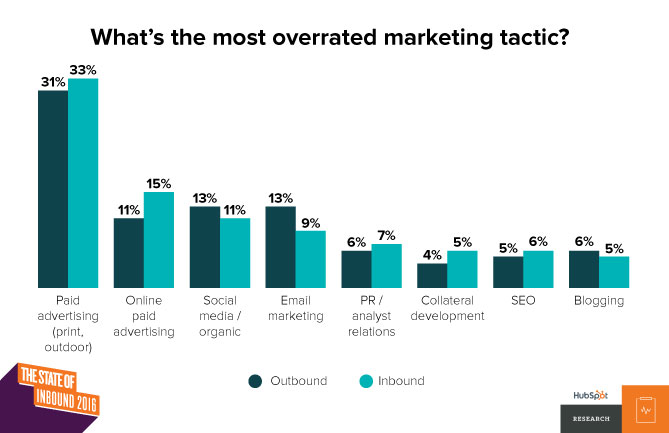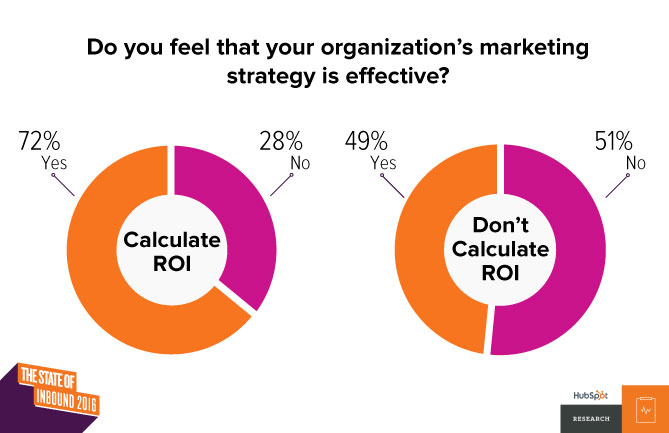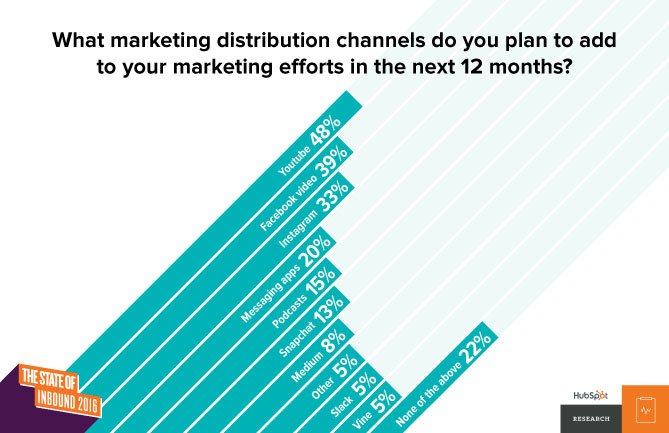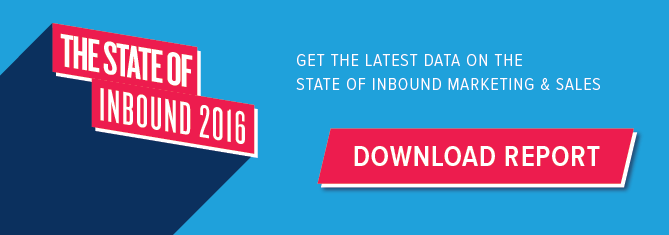
The inbound movement has always been about one thing: being relevant and truly helpful to your audience.
This approach shouldn't change, but as consumer habits evolve, marketers and salespeople must adapt to better connect with and help their prospects and customers.
To better understand how consumers are changing, we collected data from 4,500 marketers and salespeople from around the globe, resulting in the 2016 State of Inbound report. It details benchmark data on ROI, the lowdown on collaboration between Marketing and Sales, and a look at what the industry’s foremost marketers are adding to their strategy in the coming year. 
Check out the full report here or view some of the most interesting highlights below.
8 Stats You Need to Know From the 2016 State of Inbound Report
1) Inbound organizations are 4X as likely to be effective. [Tweet this]
Over the past few years of the State of Inbound report, we’ve established the challenges and priorities of marketers and salespeople. But this year, we introduced a new angle in our study: Do marketers believe their organization’s marketing strategy is effective?
As it turns out, we’re glad we asked. Out of all the datapoints in the report, the fact that inbound marketers are much more likely to be satisfied with their organization’s playbook is among our favorite insights.
2) 1/3 of marketers think outbound marketing tactics are overrated. [Tweet this]
It’s not simply the effectiveness of the inbound philosophy that encourages us, but the success of inbound when compared to alternative methods. Each year, marketers tell us that outbound practices are overrated.
While we admit we might be a bit biased, when we cut the data outbound marketers agreed. According to this year’s data, 33% of inbound marketers and 31% of outbound marketers rank outbound marketing practices such as paid advertising as the top waste of time and resources.
Marketers aren’t just saying outbound is overrated -- the data supports it. Our survey revealed outbound marketing teams have more trouble proving ROI, securing budget, and training their team compared to their inbound counterparts.

3) Organizations that can calculate ROI are 1.6X as likely to receive higher budgets. [Tweet this]
Speaking of calculating ROI, organizations that are able to do so receive higher budgets. Additionally, 72% of organizations that calculate ROI say their marketing strategy is effective. Only 49% of organizations that don’t calculate ROI say the same.
The logic here is clear: Marketers that calculate ROI both receive more budget and are more successful. With the help of an inbound methodology, all of these goals are easier to achieve.

4) Marketers struggle most with metrics-driven challenges. [Tweet this]
Marketers find tracking and making sense of their metrics a challenge. This year, 65% of marketers admit that their top challenge is generating enough traffic and leads. This is followed by 43% who struggle proving the ROI of marketing activities and 28% who are trying to secure enough budget.
All three of these top challenges are metrics-driven. Without the proper tools to track concrete campaign results, this will continue to be a struggle.

5) Inbound organizations with an SLA are over 5X as likely to be effective. [Tweet this]
When we began publishing this report eight years ago, much of our data revolved around the adoption of inbound marketing. As the message spread, we began to see why it’s crucial for both marketing and sales teams to adopt the inbound methodology together. One of the main ways this is done is through a service-level agreement (SLA).
Despite the fact that only 22% of organizations say they have a tightly aligned SLA, the benefits of having one are clear: 82% of marketers with an SLA think their marketing strategy is effective. In fact, there is no combination of factors more strongly correlated with marketing success than being both inbound and having an SLA.

6) 40% of salespeople say getting a response from prospects is getting harder. [Tweet this]
While marketers struggle with tracking the metrics of their campaigns, salespeople admit that getting a response from prospects is their top challenge. However, as you dive deeper into the data, you see the problem goes beyond prospects not answering email or phone calls.
Instead, there’s a disconnect between Marketing and Sales around the quality of leads. According to this year’s report, 59% of marketers say they provide salespeople with their best quality leads, while salespeople rank marketing leads last. In fact, marketing-sourced leads are ranked behind referrals and sales-sourced leads by all sales levels from the C-suite to individual contributors.
There’s always room to improve the handoff between Marketing and Sales. For the coming year, both departments will need to continually communicate and refine their SLA, even if there’s already one in place.
7) Marketers think video and multimedia platforms have the potential to disrupt. [Tweet this]
As marketers prepare for the future, many plan to add more multimedia content. In the past, content marketers poured their efforts into their blog. With the rising trend of content decentralization, marketers are now seeing the benefit of publishing on additional channels.
In our study, marketers are accounting for video’s global appeal, with 48% planning on using YouTube and 39% looking to add Facebook video. Podcasts are enjoying a resurgence in popularity, while others are turning to more visual platforms such as Instagram and Snapchat.
But, don’t think the age of the blog is over. Decentralized content marketing is all about augmenting your blog to make it more effective, not scratching all of your existing strategy. Marketers can start by repurposing their most successful blog content into additional multimedia formats.

8) 22% of salespeople don’t know what a CRM is. [Tweet this]
Marketers are not the only ones who should be thinking about how new technologies can alter their future strategy. A quarter of all salespeople say improving their sales technology is their top priority over the next year. Yet, 22% of respondents still don’t know what a CRM is and 40% continue to use Excel or Outlook to store customer data. It’s no wonder so many salespeople are spending an hour or more on data entry every day.
The more time salespeople spend on data entry, the less time they have to sell. And if lead records are stored in a haphazard way, there’s potential for a prospect to get contacted by multiple reps, receive redundant emails or calls, and end up with a disjointed and frustrating selling experience. As Sales looks to improve their numbers and scale their business, implementing a CRM should be a top priority for the future-thinking sales organization.
Want more data-backed insights? This is just a preview of the State of Inbound report. Download the report for free to discover how inbound marketing and sales is evolving.

from HubSpot Marketing Blog http://blog.hubspot.com/marketing/state-of-inbound-stats
No comments:
Post a Comment